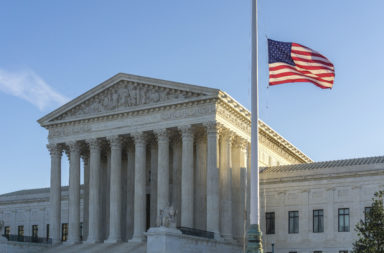Immediately following the election, the analysis was virtually synonymous. It was white women who gave Trump the victory, every third Latino voted for him, and Clinton lost millions of under-enthused Obama voters.
What does the analysis show now?
Just a month ago, Donald Trump won the US election in a sensational manner. Virtually no one predicted a Clinton loss.
Many questions asked and answered in the future might be able explain the history in retrospect. Whether FBI Director James Comey and the email affair was to blame, or whether the 85+ percent chances that the media gave Clinton of winning meant many voters thought there was no danger of such a remarkable loss. There are no resilient numbers.
An attempt to explain the American people’s choice in here sentences sounds like this:
- Trump understood and capitalised on the anti-establishment mood and mobilised, along with conservative core voters, those who are longing for change.
- Clinton was obviously only a mediocre candidate.
- Clinton was losing more voters than Obama in 2012, with the support of Latinos, African Americans and big cities not being enough to go to the White House.
Has Hillary Clinton really lost Obama voters?
It’s not that simple. Here we will look at the details.
One of the most popular theories is that Clinton lost because she could not sufficiently mobilise Obama voters. However, this is not quite correct. Clinton currently has 65.5 million votes, this is not only 2.7 million more than Trump, but at virtually the same levels as Obama in 2012 (65.9 million). In addition, more votes are still being counted in liberal New York.
What is true, however, is that her campaign lacked votes in the important electoral states.
Did low-income voters help Trump win the election?
After the dust settled on the election, a clear image was presented as the centrepiece of much analysis. Statistics showed that Clinton won 53% of the voters with low incomes (below $30,000 per year) and lost out on voters with $50,000 or more annual income.
It was Trump that achieved the majority in the higher salary classes. Proof therefore that the Republican was not able to reach low-income earners despite his rhetoric?
In fact, things are more complicated. Low-income voters have always tended to vote blue. Trump also only received 41 percent of the votes. But this is six percentage points more than Mitt Romney was able to achieve in 2012, a huge leap.
Another factor: 68% of the low-paid and low-income earners are no longer eligible. In the case of the lower middle class (up to $50,000), one third of this group was not eligible. Compared to 2012, the proportion of non-voters has grown again.
It’s unclear how much this downward trend is being influenced by abolishing voter protection laws in the South, and by the Republicans new rules in Kansas and Wisconsin that disadvantage black voters; African American voters fall disproportionately into the low-income segment, which is more inclined to the Democrats.
What role did the African Americans election behavior play?
88 percent of African Americans chose Hillary Clinton, Trump received 8 percent of their votes, however, this was significantly more that the two previous Republican candidates before him. This year, both candidates were white, and an estimated 1.9million African Americans turned out to vote, less than 2012. What is unclear currently is how much this was affected by voter restrictions. In any case it is clear, the political superstars Michelle and Barack Obama could not sufficiently generate enthusiasm and passion for Clinton, despite all their efforts with the African American community.
Did the Latinos hang Clinton?
Brexit has proven that surveys and polls are often imprecise, and much of the analysis of this article is based on the exit polls of Edison Research, for which 25,000 voters were interviewed.
However, the number base could be problematic for groups such as minorities with low educational qualifications. “Voters with university degree are always more represented in Edison as the population average, workers, however underrepresented,” says Ruy Teixeira from the think tank Center for American Progress. He considers it a legend that 29 percent of Latinos voted for Trump.
With his anti-Latino rhetoric (wall building, illegal migrants), it seems unlikely that Trump was up two points compared to Romney. More realistic is the election survey conducted by Latino Decisions, where Trump receives 19 percent – and Clinton 79 percent. To this end – unlike Edison – interviews were conducted in Spanish. Various studies from Texas and Arizona were evaluated for the official voter data, and they doubt Trumps Popularity on among Hispanics. Conclusion: The Latinos have not let Clinton hang.
What role did the young voters play?
It was different with the young voters. “Yes, you can give the Millennials the blame for Hillary Clinton’s defeat”, the Washington Post wrote in a blog post citing as key witnesses Robby Mook. “We needed more than 60 percent of the voters, but we got less, so we lost.” Distrust of young Americans against Clinton is well documented, the fear of Trump was not enough, causing many to either not vote, or vote for a third party candidate.




